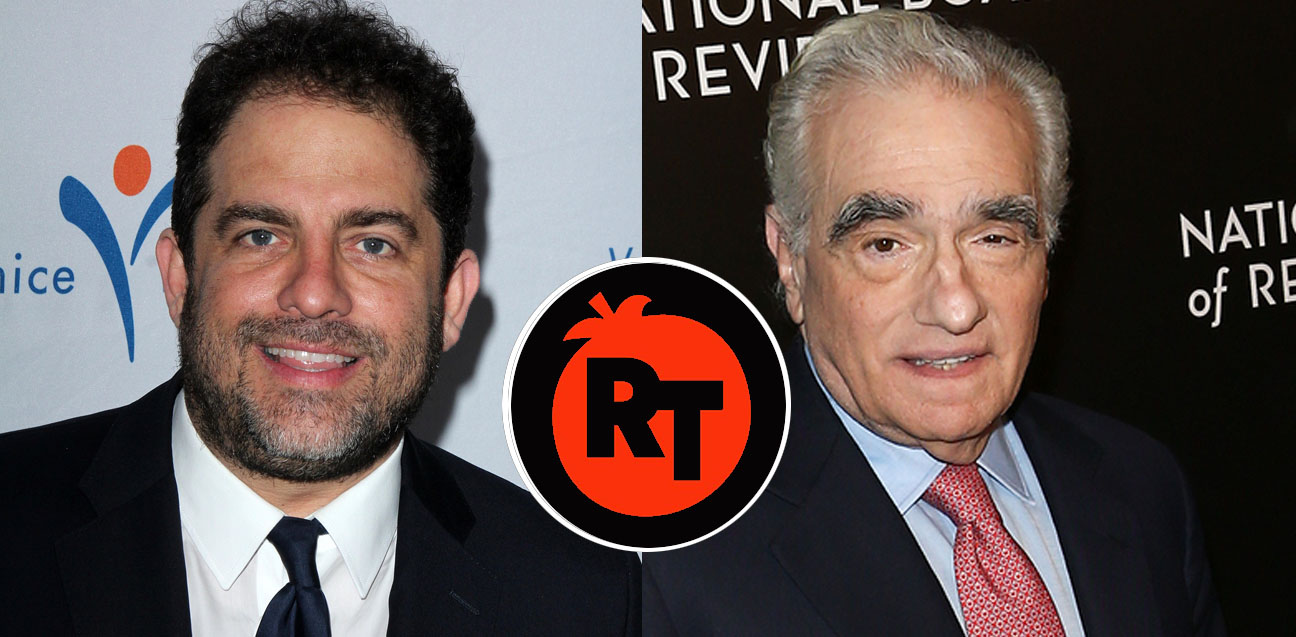When a movie studio has a flop on their hands, they don’t screen the movie for the critics. Why bother sinking a movie’s opening weekend with savage shade? But in this day and age, more and more people look for the simple “review aggregator” rating from Rotten Tomatoes.
In general, most people assume that Rotten Tomatoes is some sort of average from film critics opinions. But the problem is that Rotten Tomatoes’ Certified Fresh and Rotten ratings are as simplistic as they are as misleading. If you’re old enough to remember the original uproar over Siskel and Ebert’s ‘thumbs up / thumbs down’ rating, you’ll understand why movie studios cringe over Rotten Tomato certifications. Like the reaction to Siskel and Ebert’s simplified review ratings, the studios don’t feel that a movie can be applauded or dismissed on a binary rating of Fresh or Rotten.

Methodology. Rotten Tomatoes explains on its website that their ‘Tomatometer’ is “based on the opinions of hundreds of film and television critics – is a trusted measurement of critical recommendation for millions of fans.” If a film scores over 60%, it is rated “Fresh.” Below that, “Rotten.” Rotten Tomatoes interprets a review, converts it into a percentage and uses that number toward its aggregated score. Therefore, the higher the percentage means the higher the consensus a movie is good or bad, not that it is any better or worse. Digital Spy used an example comparing the Rotten Tomatoes rating of then 100% for Annabelle: Creation versus Dunkirk’s score of 93%. This does not mean that Annabelle: Creation is a better movie than Dunkirk. It means that of the group of critics who reviewed Annabelle, there was a greater consensus that they enjoyed the film better than the critics who reviewed Dunkirk.

Director Brett Ratner on Rotten Tomatoes: “The worst thing that we have in today’s movie culture is Rotten Tomatoes. I think it’s the destruction of our business.”
But how does Rotten Tomatoes convert middling reviews into a percentage? Many newspaper film critics still use the 5-star rating. Others, like Entertainment Weekly, grade their reviews with letter grades. How does Rotten Tomatoes convert all these different critical currencies into a consistent and representative percentage number?
Director Brett Ratner famously blasted Rotten Tomatoes. He said last year, “The worst thing that we have in today’s movie culture is Rotten Tomatoes. I think it’s the destruction of our business. I have such respect and admiration for film criticism. When I was growing up, film criticism was a real art. And there was intellect that went into that. Now, it’s about a number. A compounded number of how many positives vs negatives. Now it’s about, ‘What’s your Rotten Tomatoes score?’ And that’s sad because the Rotten Tomatoes score was so low on Batman v Superman, I think it put a cloud over a movie that was incredibly successful.”
Who is a critic? Batman fans bombarded Rotten Tomatoes and Marshall Fine’s websites with death threats after the writer published a negative review of The Dark Knight Rises.
Who’s a critic? The other problem with Rotten Tomatoes is that to be included in their pool of critics, online critics merely have to have 500,000 visitors a month. While the traditional film critic may have a background in film studies, journalism and criticism, the complaints from filmmakers is that Rotten Tomatoes gives equal weight to online critics who are not all professional film critics, but instead zealous fans with an audience. The best example is the notorious case of Indiewire’s film critic Marshall Fine who gave a negative review of “The Dark Knight Rises” – Nolan and Batman fans bombarded the Rotten Tomatoes and Fine’s websites with death threats. Indiewire’s diss of Rotten Tomatoes? “The internet age created an explosion of people writing about movies, often without journalistic or cinematic education. But on RT, all opinions are created equal.”
Martin Scorsese blasted Rotten Tomatoes in an op-ed he wrote for The Hollywood Reporter last year. “These firms and aggregators have set a tone that is hostile to serious filmmakers — even the actual name Rotten Tomatoes is insulting. And as film criticism written by passionately engaged people with actual knowledge of film history has gradually faded from the scene, it seems like there are more and more voices out there engaged in pure judgmentalism, people who seem to take pleasure in seeing films and filmmakers rejected, dismissed and in some cases ripped to shreds.”
Sadly, binary ratings seem to be indicative of today’s culture. Netflix infamously changed their rating system last year, allowing viewers to rate from one to five stars to either a thumbs up or down. Netflix claims it moved to this binary system to learn about viewer’s tastes – and that’s why you will see a new Netflix offering will have a predictive percentage match to your tastes – all based on what you thumbed up or down in the past.
As long as the Rotten Tomatoes rating has an impact on box office, Hollywood will yield. For the intelligent movie goer, we can only hope they will actually read a critic’s review rather than accept a simple number that claims to represent every opinion and a film’s quality.
======
About the contributing writer: Harrison Cheung is the award-winning author of the Christian Bale biography, THE INSIDE STORY OF THE DARKEST BATMAN.



